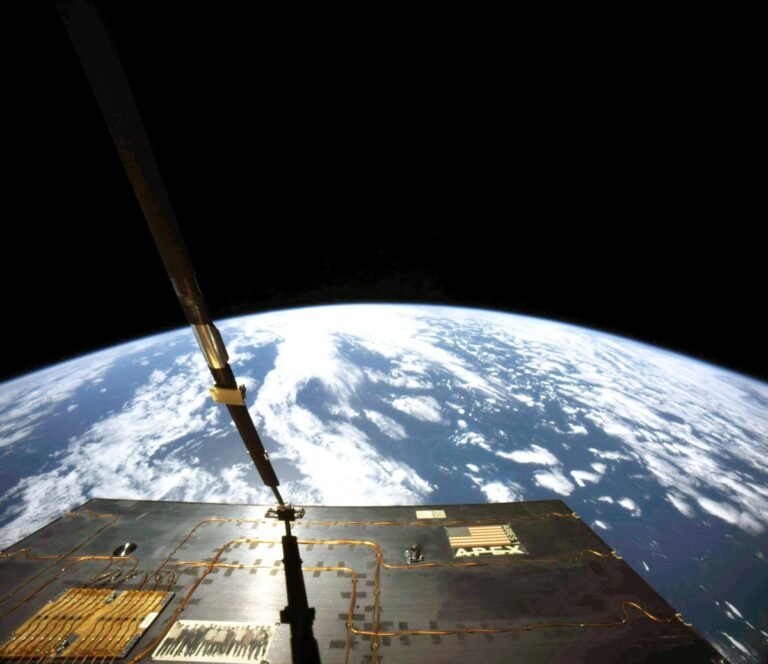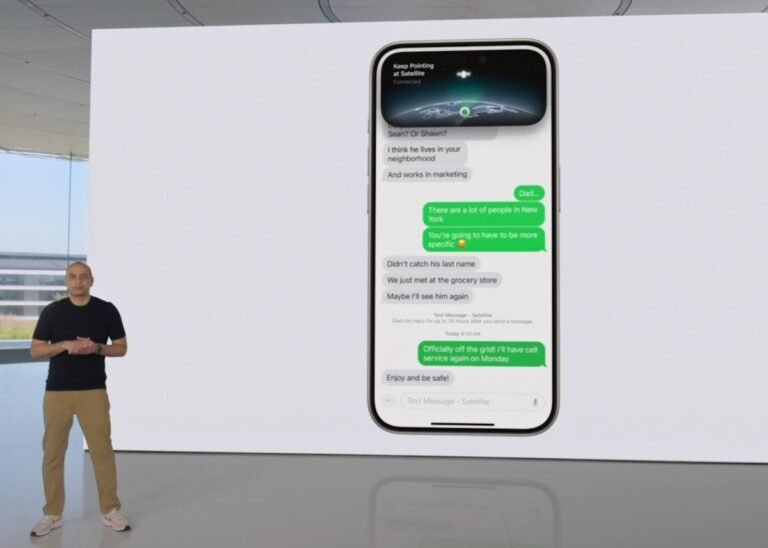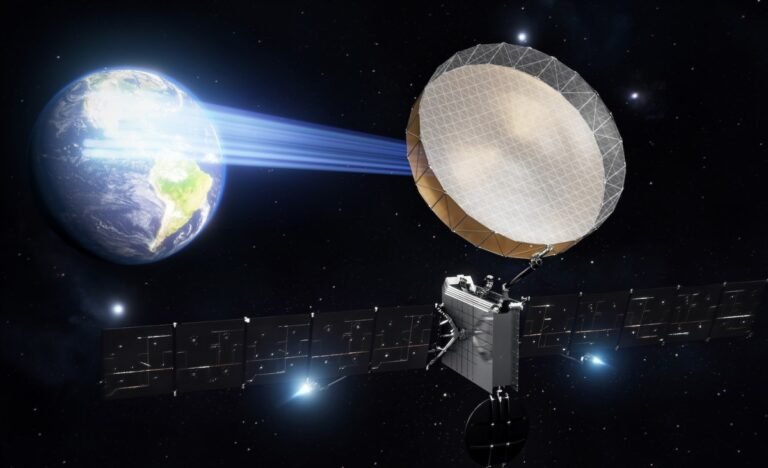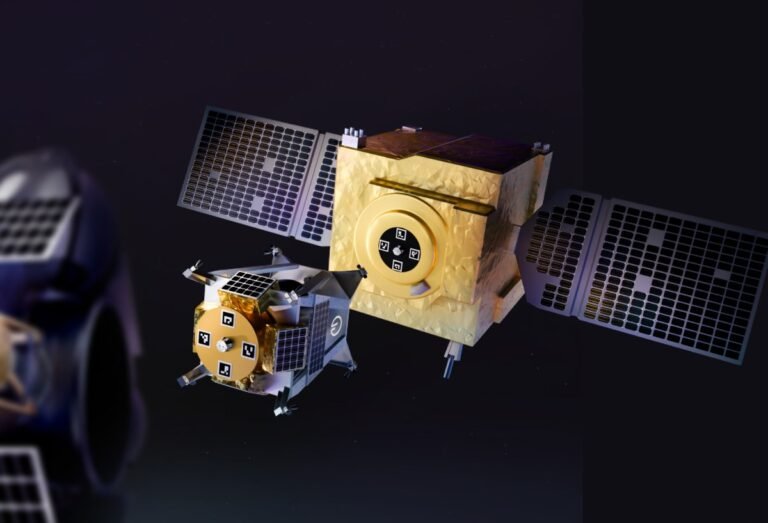
Fresh off the success of its first mission, satellite manufacturer Apex has closed $95 million in new capital to scale its operations.
The Los Angeles-based startup successfully launched and commissioned its first spacecraft, a model called Aries, in March.
The company is on track to manufacture five Aries this year alone, Apex CEO and co-founder Ian Cinnamon told TechCrunch.
Apex was founded on the thesis that the one of the main bottlenecks facing the growth of the space industry was satellite bus manufacturing.
The company is approaching fifty people and that number is likely to double by the end of this year.

Apple’s emergency SOS feature has proven useful for a fair number of people whose cars break down (or tumble down) in areas with no signal.
Soon you’ll be able to use iMessage and SMS as well — though it’s not clear what the limitations on the service may be.
Announced at Apple’s WWDC 2024 keynote on Monday, “Messages via Satellite” works much like the SOS feature did.
When you have no signal — otherwise the phone will use that — you’ll be given the option to find a satellite to relay the data.
Apple did not say when the new feature will be available or whether it’s restricted to certain phones or plans.

Rocket Lab and True Anomaly will attempt to deliver and operate space hardware for the military under intentionally tight timeframes, as part of the Space Force’s push to solicit “tactically responsive” space capabilities from commercial companies.
As part of Rocket Lab’s $32 million contract, it will also launch the satellite with its Electron rocket.
True Anomaly will partner with an unnamed “trusted commercial launch provider” for its ride under its own $30 million contract, according to a statement.
Once in orbit, Rocket Lab and True Anomaly must rapidly commission and ready their spacecraft for operations — with each other.
If all goes to plan, Rocket Lab’s Pioneer satellite will conduct the so-called rendezvous and proximity operations with True Anomaly’s Jackal spacecraft.

Astranis has taken the wraps off a new generation of communications satellites that will serve broadband to customers on Earth from geostationary orbit, but faster and smaller than any comsat up there.
Astranis builds and operates relatively small broadband satellites in high orbits, and sells that capacity on to telecom and internet service providers.
The startup takes prize in the comparatively diminutive size of its GEO satellites, which are normally huge and, as a result, are easy to track and potentially attack.
Like the company’s current satellites, Omega will have the ability to maneuver in GEO using on-board all-electric propulsion.
The company aims to complete the first Omega satellite in 2025 and launch to orbit in 2026.

Hello and welcome back to TechCrunch Space.
“SpaceX has made rockets reusable, Orbit Fab makes satellites reusable,” he said.
“In this world today, if you’re running a rocket company, and you’re not working towards reusable rockets, you’re working to a dead end.
The same is true of satellites: If you’re not making your satellites reusable, you’re just putting preordained junk into orbit.”I learned a lot from this deep dive into China’s struggles to bring on international partners to its International Lunar Research Station initiative.
On April 1, 1960, THE VERY FIRST weather satellite was launched by NASA.

On its website, Orbit Fab says its hydrazine delivery service in geostationary orbit will cost $20 million for up to 100 kilograms.
Given the simplicity of the architecture, nailing each part of the hardware is critical; hence why it’s taken years for Orbit Fab to debut the refueling port.
Orbit Fab is aiming to sell 100 fueling ports this year, which will put the RAFTI “on a decent percentage of satellites going to orbit,” Faber said.
“SpaceX has made rockets reusable, Orbit Fab makes satellites reusable,” Faber said.
The same is true of satellites: if you’re not making your satellites reusable, you’re just putting preordained junk into orbit.”

But then there’s methane, which has driven about 30% of climate change, according to the IEA.
Leaks are one of the main sources, both from aging natural gas infrastructure and oil and gas fields.
The company has been able to observe a significant portion of estimated oil and gas methane emissions in the U.S., the IEA said in a report released Wednesday.
Huppertz and co-founder Jack Angela have developed a suite of algorithms to detect methane emissions using freely available satellite data.
“And so making sure that methane and natural gas stays within infrastructure and does not leak into the atmosphere will always be a crucial point until the last drop of natural gas is used.”

Kurs Orbital, a startup founded by Ukrainian space industry veterans, has closed a new tranche of funding to accelerate the commercialization of its satellite servicing technology.
The two-year-old company aims to unlock a new era for human activities in space by enabling capabilities like satellite relocation and inspection, de-orbiting and space debris removal.
Unlike other firms developing in-space servicing tech, Kurs Orbital’s module will be able to attach to “non-cooperative” targets, or target spacecraft that aren’t fitted with any hardware in advance.
On-orbit servicing has gained attention in recent months after the failure of a handful of high-cost, high-profile satellite missions.
We believe that one of the next big steps in space will be multimodality, as we know it on Earth.

Apex Space just moved one step closer to its goal of upending satellite bus manufacturing, with the startup announcing on Tuesday that its first vehicle is healthy on orbit.
The company launched its first satellite, the first of a class Apex is calling “Aries,” on SpaceX’s Transporter-10 rideshare mission on Monday.
“That will be incredibly valuable over the next many years while the satellite stays in orbit,” Cinnamon said.
Apex, whose backers include Andreessen Horowitz and Shield Capital, is building productized satellite buses to solve the satellite bus “bottleneck” facing the space industry.
In addition to Aries, an ESPA-class spacecraft bus that can support payloads up to 100 kilograms, the company is also developing two larger bus product lines, Nova and Comet.

Today, the startup emerged from stealth with the Fused platform, and $1 million in pre-seed funding.
It takes data, fed from satellites, sitting in storage repositories and runs it through its platform to make it usable.
The platform is essentially a middleware processing layer that helps turn the geospatial data into something more consumable.
It consists of several open source pieces and a serverless processing engine.
They can then transfer this data to other programs for further analysis or create data visualizations based on the data.













